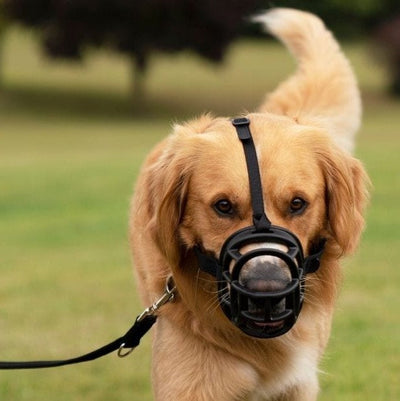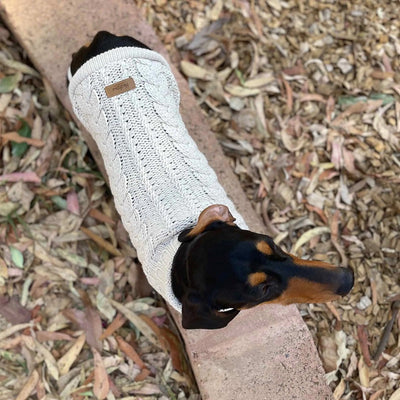
From striped angelfish to pearlscale and diamond angelfish, these freshwater tropical fish will make a captivating addition to any tank. But to ensure their well-being, it's important to provide them with the right care. In this article, we will provide you with essential angelfish care tips that will help keep your fish happy and healthy.
Maintaining a clean and well-filtered aquarium is crucial for angelfish. These delicate creatures require an environment with stable water conditions and a pH level between 6.5 and 7. They also thrive in warmer temperatures, so keeping the water temperature around 25°C — 29°C is ideal. Additionally, angelfish need plenty of swimming space, so opt for a deep tank.
Feeding your angelfish a balanced diet is another crucial aspect of their care. These omnivorous fish enjoy a combination of flake or pellet food as well as live or frozen food like brine shrimp or bloodworms. Finally, providing them with hiding spots and ample lighting will help recreate their natural habitat and keep them stress-free.
By following these angelfish care tips, you'll ensure a vibrant and thriving aquarium that will be the envy of all fishkeeping enthusiasts. Get ready to enjoy the beauty and grace of your angelfish as they gracefully swim through their happy and healthy environment.
Setting up the perfect angelfish aquarium
Setting up an angelfish aquarium requires careful planning and consideration. One of the most important factors to consider is the size of the tank. Angelfish need plenty of swimming space, so opt for a large, deep tank with a minimum capacity of 120-150L.This will provide them with ample space to explore and thrive.
In addition to size, the aquarium should also be equipped with appropriate filtration. Maintaining a healthy and well-filtered aquarium is crucial for angelfish. These delicate creatures require an environment with stable water conditions and a pH level between 6.5 and 7. A good quality filter will help remove impurities and keep the water parameters in check.
Lighting is another important aspect of setting up an angelfish aquarium. These fish enjoy a well-lit environment that mimics their natural habitat. Opt for LED lights that provide a full spectrum of colours, as this will enhance the vibrant hues of the angelfish and create a visually appealing display.
Add plants to your aquarium, these will provide natural hiding places that are soft for your fish. Consider planting a variety of live aquarium plants, tall growing plants include:
Overall, creating the perfect angelfish aquarium involves careful consideration of tank size, filtration, live aquatic plants and lighting. By ensuring these elements are in place, you'll be providing your angelfish with a comfortable and thriving environment.
Water conditions and temperature requirements for angelfish
Maintaining proper water conditions is essential for the health and well-being of angelfish. These fish are native to the Amazon River basin, where they thrive in warm and slightly acidic water. To replicate their natural habitat, it's important to maintain stable water parameters.
The ideal water temperature for angelfish is between 25°C — 29°C. This can be achieved by using a heater and a reliable thermometer to monitor the temperature. Avoid drastic temperature fluctuations, as it can cause stress and lead to health issues in angelfish.
In addition to temperature, the pH level of the water is also crucial. Angelfish prefer slightly acidic water with a pH level between 6.5 and 7. Regular testing of the water parameters is important to ensure they remain within the desired range. If necessary, pH adjusters can be used to maintain the optimal pH level for your angelfish.
Lastly, angelfish require clean water with low levels of ammonia and nitrite. The following blog about Ammonia is well worth reading as well: Ammonia Levels in Your Aquarium: What You Need to Know for Your Fish's Health
Regular water changes and the use of a good quality filter will help maintain water quality. It's recommended to perform partial water changes of around 20% every week to keep the aquarium clean and the water conditions stable. Learn more about how to change the water in your aquarium here!
By maintaining the proper water conditions and temperature, you'll be providing your angelfish with a comfortable and healthy environment that promotes their overall well-being.
Feeding angelfish: types of food and feeding schedule
Feeding your angelfish a balanced diet is essential for their growth and vitality. These fish are omnivorous and enjoy a combination of flake or pellet food as well as live or frozen food. Providing them with a variety of food options will help ensure they receive all the necessary nutrients.
A high-quality angelfish flake or pellet food should form the basis of their diet. Look for a brand that contains a good balance of protein, vitamins, and minerals. Feed them a small amount of flake or pellet food two to three times a day, ensuring they consume it within a few minutes. Overfeeding can lead to health problems and poor water quality, so it's important to feed them in moderation.
In addition to flake or pellet food, angelfish also enjoy live or frozen food. Brine shrimp, bloodworms, and daphnia are all excellent options to include in their diet. These foods are rich in protein and help replicate the natural diet of angelfish. Offer them live or frozen food as a treat once or twice a week, in addition to their regular flake or pellet food.
It's important to note that angelfish have small mouths and can be slow eaters. Ensure that the food you provide is in small enough pieces for them to consume easily. If you have other fish in the tank, monitor their feeding habits to ensure the angelfish are getting their fair share.
By providing your angelfish with a balanced diet that includes a variety of food options, you'll be promoting their overall health and ensuring they receive all the necessary nutrients for growth and vitality.
Angelfish tank mates: compatible fish species
When selecting tank mates for your angelfish, it's important to choose fish species that are compatible with their temperament and size. Angelfish do best with other Angelfish in pairs or small schools. They will grow to around 14cm in size. Angelfish can be territorial and may become aggressive towards smaller or slower fish. It's crucial to choose tank mates that can coexist peacefully with the angelfish.
Corydoras catfish are another suitable option for angelfish tank mates. These small bottom-dwelling fish are peaceful and can help keep the aquarium clean by eating leftover food and debris. They are also compatible with angelfish in terms of size and temperament.
Avoid adding fish species that are much smaller than the angelfish, as they may become targets for aggression. It's also important to avoid adding aggressive or fin-nipping fish, as this can cause stress and harm to the angelfish.
Before introducing any new fish to the angelfish tank, it's recommended to research their compatibility and observe their behaviour in a separate tank. This will help ensure a peaceful and harmonious community aquarium for your angelfish.
Cleaning and maintaining the angelfish aquarium
Regular cleaning and maintenance of the angelfish aquarium is crucial for their health and well-being. A clean and well-maintained tank will help prevent the build-up of harmful toxins and ensure optimal water conditions.
One of the key maintenance tasks is performing regular water changes. Partial water changes of around 20% should be done weekly to remove any accumulated toxins and maintain water quality. During the water change, ensure that the new water is at the same temperature and pH level as the existing water to reduce stress on the fish.
In addition to water changes, regular cleaning of the filter is important. Filters can become clogged with debris and waste, reducing their effectiveness. Follow the manufacturer's instructions for cleaning the filter and replace any filter media as needed. This will help maintain proper filtration and keep the water clean and clear.
It's also important to monitor the water parameters regularly. Test the water for ammonia, nitrite, nitrate, and pH levels using reliable test kits. This will help you identify any issues and take corrective measures before they become a problem.
Lastly, keep an eye out for any signs of disease or illness in your angelfish. Common health issues include fin rot, ich, and swim bladder disorder. If you notice any abnormal behaviour or physical symptoms, consult a fish veterinarian or a knowledgeable fish store for appropriate treatment options.
By implementing a regular cleaning and maintenance routine, you'll be providing your angelfish with a clean and healthy environment that promotes their overall well-being.
Common health issues in angelfish and how to prevent them
Angelfish, like any other fish, are susceptible to various health issues. Being aware of common health problems and taking preventive measures can help keep your angelfish healthy and thriving.
One common health issue in angelfish is fin rot. This bacterial infection can cause the fins to become frayed or discoloured. To prevent fin rot, maintain good water quality by performing regular water changes and keeping the aquarium clean. Avoid overcrowding and ensure proper filtration to reduce stress on the fish.
Ich, or white spot disease, is another common ailment in angelfish. It manifests as small white spots on the fish's body and fins. Ich is caused by a parasite and can be introduced to the tank through new fish or contaminated equipment. To prevent ich, quarantine new fish before introducing them to the main tank and regularly clean and disinfect any equipment used in multiple tanks.
Swim bladder disorder is a condition that affects the fish's ability to control its buoyancy. It can cause the angelfish to float or sink uncontrollably. Swim bladder disorder is often caused by overfeeding or poor nutrition. To prevent this condition, ensure you are feeding your angelfish a balanced diet in appropriate quantities. Avoid overfeeding and remove any uneaten food from the tank to prevent water quality issues.
Regular observation and monitoring of your angelfish's behaviour and physical appearance are key to catching any health issues early on. Prompt treatment and appropriate care can help prevent the spread of diseases and ensure a healthy and thriving angelfish aquarium.
Enjoying a thriving angelfish aquarium
By following these angelfish care tips, you'll ensure a vibrant and thriving aquarium that will be the envy of all fishkeeping enthusiasts. From setting up the perfect tank to maintaining optimal water conditions, feeding a balanced diet, choosing compatible tank mates, and preventing common health issues, you'll be providing your angelfish with the care they need to thrive.
Take the time to research and understand the specific requirements of angelfish, and be proactive in addressing any issues that may arise. With proper care and attention, your angelfish will reward you with their beauty and grace as they gracefully swim through their happy and healthy environment.
Invest in the well-being of your angelfish, and you'll be rewarded with a stunning and captivating aquarium that brings joy and tranquility to your home or office. Start implementing these care tips today and embark on a fulfilling journey of angelfish keeping.
© weknowpets 2024








